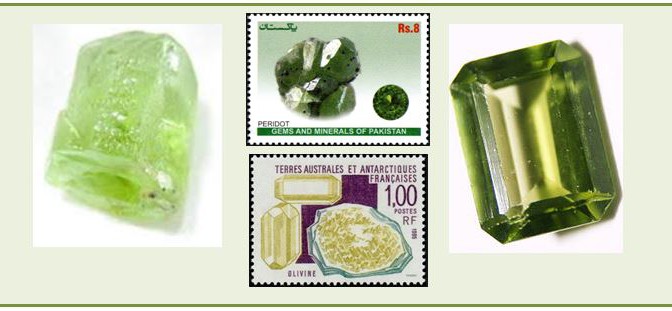Published in the August WCGMC newsletter
Olivine is one the most common rock-forming silicate minerals on our glorious planet. It is found in iron and magnesium rich igneous rocks, both extrusive rocks like basalt (think Hawaii) and intrusive equivalents like gabbro and deep mantle rocks called peridotite.. When it is found transparent and unfractured, olivine can be faceted into a brilliant green gemstone. We call that gemstone peridot and it is the August birthstone.
Olivine Group minerals are nesosilicates, meaning that their mineral lattice consists of isolated silica tetrahedral that are connected by interstitial cations (most commonly iron and magnesium). This leads to the formula (Mg, Fe)2SiO4. End member Mg-bearing olivine is the mineral forsterite, while Fe-dominated olivine is the mineral fayalite. The term chrysolite is sometimes used to label intermediate composition olivine. Most olivine contains both magnesium and iron, but Mg-rich forsterite is more common than fayalite.
